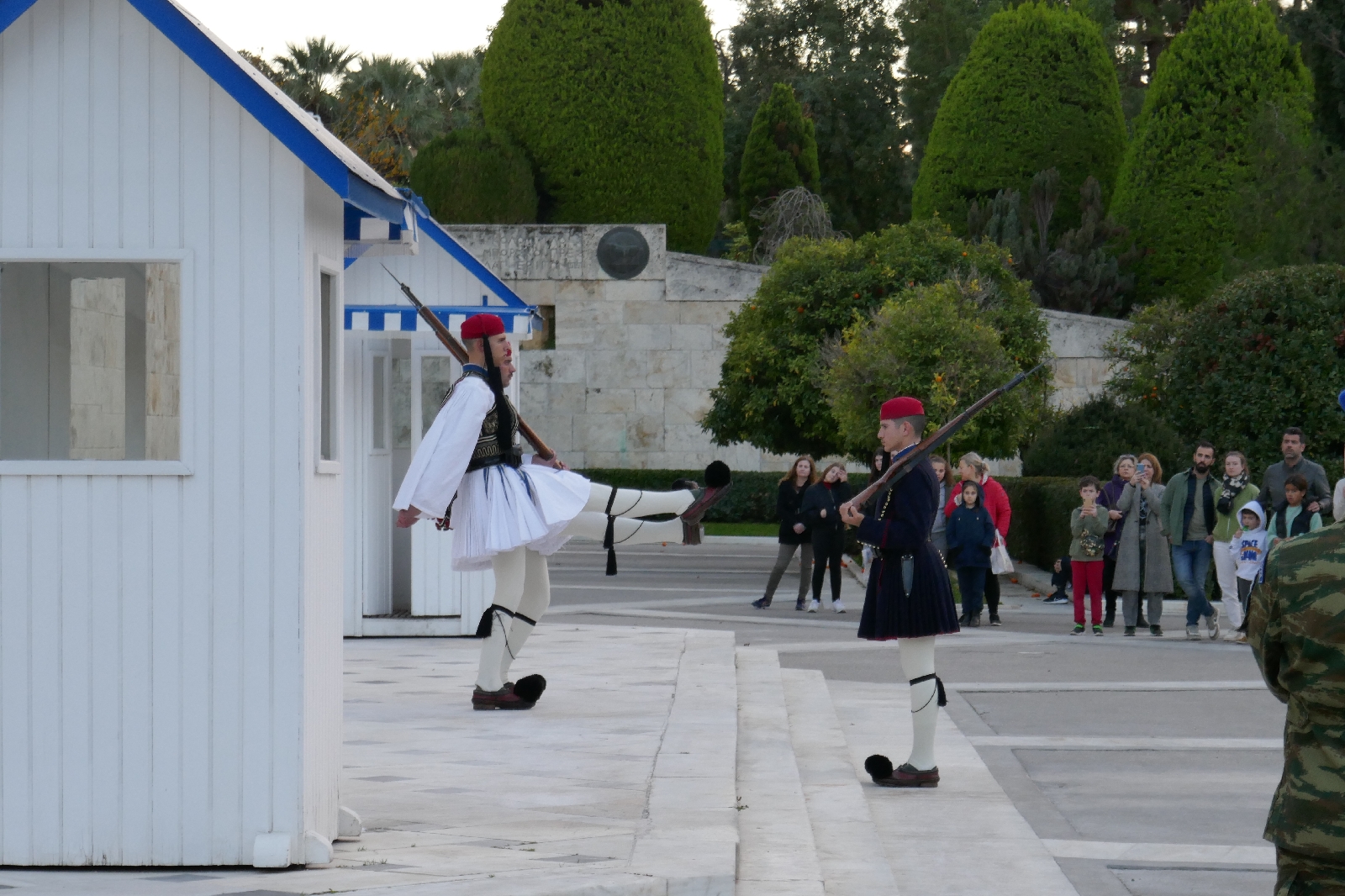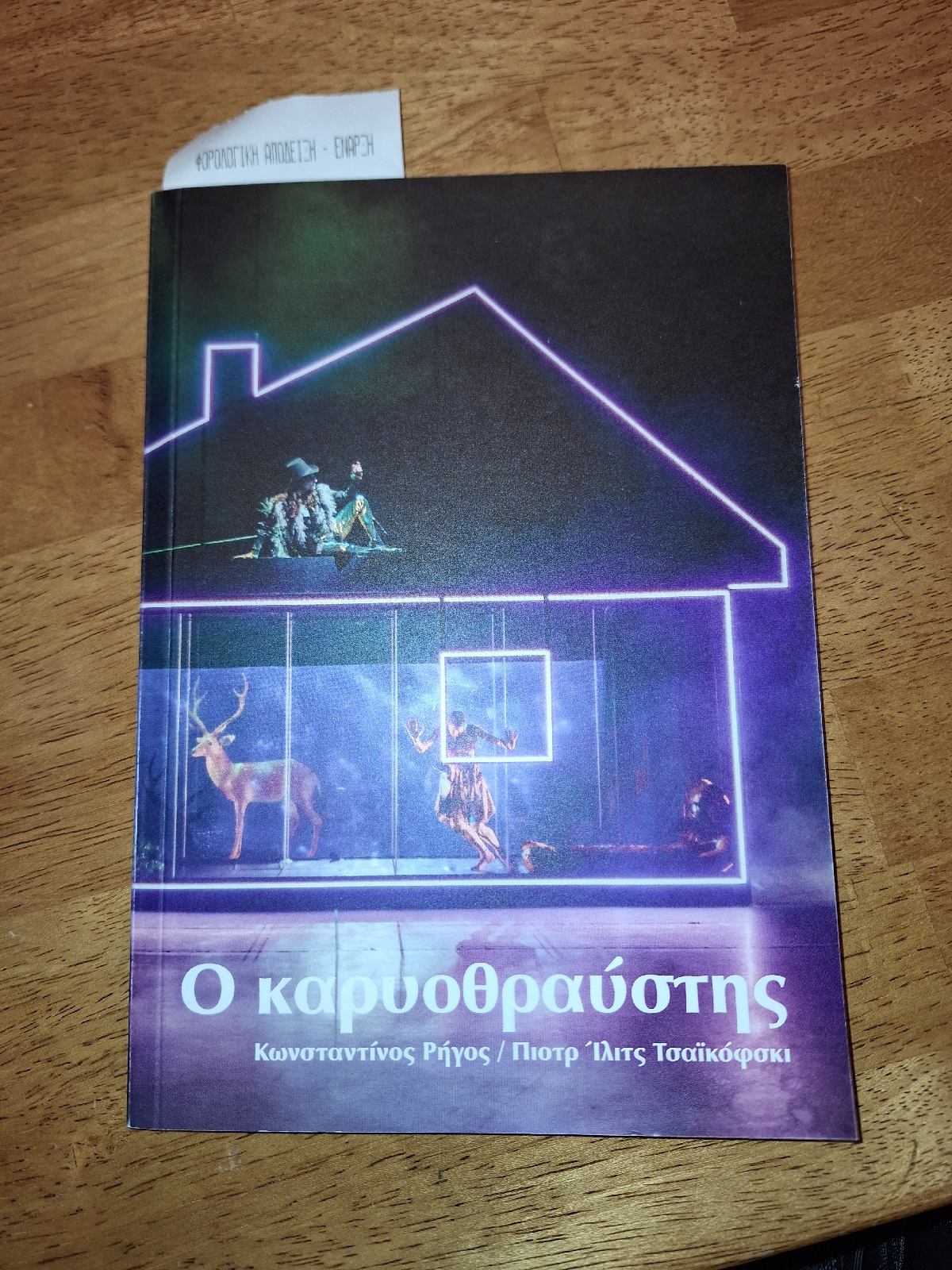The flight from Tiranë to Athens takes only an hour. On this Epiphany (and Saturday) many people were out and about in Athens. At Monastrki Square, we popped into the Holy Church of the Virgin Mary Pantanassa. Dating from the 600s C.E the ceiling above the entrance is painted with a watchful eye.
We walked around the Acropolis Hill, then down to the Gate of Hadrian, combining Greek and Roman styles. Behind the arch lies the National Garden, with many trees heavy laden with small oranges, currently in season.
Walking toward the Metro, we were passed by small troop of soldiers in elaborate uniforms marching down the street. Following them, we came upon the changing of the guard at the Tomb of the Unknown Soldier at Syntagma Square (1).
My friend had an early night. Looking for some entertainment on this Saturday night, I came across O καρυοθραύστης (The Nutcracker). The Greek National Opera had just two tickets available for tonight's performance, a subway and tram ride (2) away in Piraeus, Athen's port.
While I was quite familiar with Tchaikovsky's music, I had not seen a production of the ballet in decades. The productions I had seen before were designed for children, and had dancing and costumes that could have been from the late 1800s, when Tchaikovsky composed the piece.
As the curtain rose, a dancer descended from the ceiling wearing leather pants. The production had modern costumes, up-to-date dancing, and was clearly designed for an adult, not child, audience. A video screen in back set the mood, with two modern music sequences, ending in phrases in English (about dreams). This was not the Nutcracker I remembered at all. I was enraptured from the opening bars (3).
The dancers' fluid and athletic movements coveyed strong feelings and created a mood. The dance of the sugar plum fairies was by men wearing white tutus and silver jackets while playing with deflated soccer balls. This was not done for comic effect, it just worked., The story ends with the "young lovers" (as the video screen says in English) dancing in street clothes. You could feel an electric spark between the dancers playing Clara and the Nutcracker through their movements.
I opted for trams all the way back to Athens.
(1) Syntagma is Greek for "Constitution," commemorating the Constitution of 1844 imposed on King Otto (a) by a bloodless rebellion.
(a) When modern Greece emerged from Ottoman rule in the 1832, they needed to find a King (i). Bavarian Prince Otto was available, so he took the job, reigning (with varying degrees of power), until his deposition in 1862.
(i) Bulgaria followed a similar trajectory in the 1870s, finding a German Prince (who was otherwise unoccupied) to be their Tsar.
(2) You're on your own connecting between the two due to the absence of signage. Once off the tram, I followed some other passengers off the end of the platform, across a busy road with no crosswalk until I could see the Opera House separated from me by a chain-link fence along a road with no sidewalk jammed with cars accessing the theater's parking garage, through which one walks. The adjacent National Library is seemingly also designed for car-only access. The complex was built in 2017 to exacting environmental standards, but they seem to have forgotten public transit, and the carbon effects of a huge parking garage.
(3) Described by the company as "This Gen Z Nutcracker walks the line between contemporary visuals and classical dance tradition." Short promotional video of the production: https://youtu.be/AFU24o1sIJ4?feature=shared
Hadrian's Library
Hadrian's Gate
At the National Garden
Changong of the guard at the Tomb of the Unknown Soldier, Syntagma (Constituion) square.Representation of the 1843 Rebellion at Syntigma. Soldiers in this image are wearing uniforms similar to those worn by the soldiers guarding the tomb.
















No comments:
Post a Comment